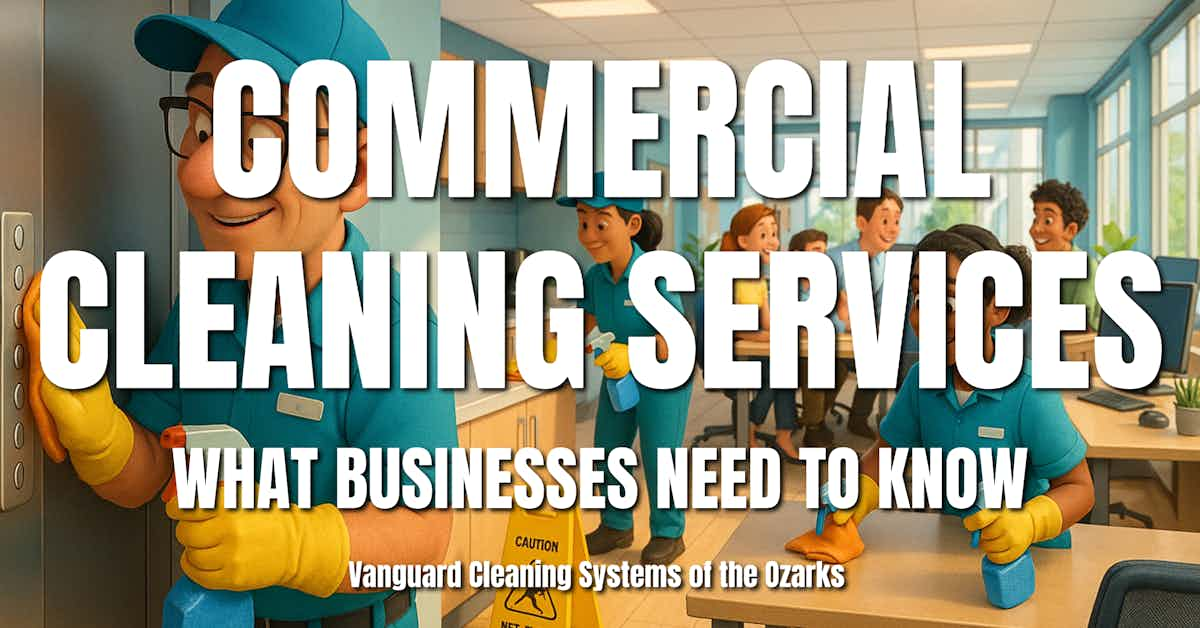A healthier workplace starts with consistent sanitation that keeps germs away, employees present, and productivity at its peak.

The Strategic Role of Janitorial Services in Reducing Workplace Absenteeism
Employee absenteeism imposes substantial and recurring costs on organizations, reducing productivity, straining resources, and undermining operational stability. Millions of workdays are lost annually due to sickness absence, with associated expenses reaching into the billions. Even small percentage reductions in absenteeism can yield measurable savings and performance gains. Ill health consistently emerges as the primary cause, and a significant portion of sickness absence is linked directly to workplace environmental conditions such as poor hygiene, inadequate air quality, and unsafe surfaces. This connection positions workplace cleanliness as a critical factor in prevention.
Research shows that improvements in the work environment directly reduce absence rates, while poorly designed or inconsistently applied attendance policies can undermine these gains. Organizations that systematically monitor absence, implement structured return-to-work procedures, and maintain high environmental standards typically outperform those with irregular practices. Within this framework, professional janitorial services are more than a cosmetic expense—they are an essential part of workplace health strategy. By reducing exposure to pathogens, allergens, and physical hazards, they help prevent health-related absences before they occur.
Immediate actions that align janitorial practice with absenteeism reduction include:
- Sanitizing high-touch surfaces such as door handles, elevator controls, and shared devices on a set schedule, adjusted for occupancy levels and seasonal risks.
- Prioritizing restrooms, kitchens, and shared meeting spaces with targeted cleaning protocols to prevent cross-contamination.
- Coordinating cleaning efforts with hazard control measures, including spill response, walkway clearance, and ventilation maintenance.
- Increasing cleaning frequency during periods of heightened illness transmission and communicating these efforts to employees to build trust and confidence in workplace safety.
Measuring the impact of these efforts is equally important. Tracking absenteeism metrics—such as severity (lost-time rate), frequency (spells per employee), and duration (days per spell)—alongside cleaning quality scores allows organizations to identify trends and adjust protocols proactively. By integrating professional janitorial services into a broader attendance and health management strategy, employers can create cleaner, safer environments that foster well-being, enhance morale, and significantly reduce avoidable absenteeism.
Research-Based Sanitation Strategies That Reduce Absenteeism
Evidence from controlled cleaning studies shows that the difference between visual cleanliness and true pathogen reduction lies in how cleaning is performed. While some studies originate from agricultural or healthcare environments, the lessons translate directly to office, healthcare, and industrial workplaces where employee health directly impacts attendance.
Floors Require a Two-Step Process
Workplaces with high foot traffic benefit most from a two-step approach: first, a thorough wash to remove dirt, dust, and biofilm, and then a targeted sanitation step to neutralize residual pathogens. Relying on washing alone often leaves behind harmful bacteria, which can become airborne through dust or tracked into other areas.
Shared Equipment Is a Contamination Hotspot
Specialized studies have shown that high-use equipment—like animal feeders in agriculture or medical surfaces in hospitals—can remain contaminated even after routine cleaning. In the workplace, this risk translates to shared appliances such as coffee machines, microwaves, breakroom sinks, shared keyboards, and elevator controls. Without dismantling components or using specialized tools, pathogens remain embedded, increasing the risk of cross-contamination.
Consistency Is Key to Results
When cleaning methods vary from one team or shift to another, results become inconsistent. A standardized cleaning protocol—documented, trained, and audited—ensures that all high-risk areas receive the same thorough sanitation each time. Facilities that maintain this consistency see fewer illness clusters and lower rates of related absenteeism.
Avoid the “Looks Clean” Trap
Workplaces that focus solely on visible cleanliness risk missing invisible pathogens. Dusting or surface wiping without sanitation does not prevent illness spread. True health protection comes from combining mechanical cleaning with effective sanitizing agents suited for the environment.
Practical Steps for Workplace Application:
- Use a two-step process for high-traffic floors and contact surfaces: physical cleaning followed by sanitation.
- Include shared equipment and breakroom appliances in daily sanitation checklists.
- Establish documented protocols and train staff to follow them consistently.
- Incorporate verification methods such as ATP testing for critical areas.
- Schedule periodic deep cleans for complex, high-contact items.
By applying these evidence-based methods, workplaces can close the gap between visual appearance and true hygiene, leading to healthier environments, fewer illness-related absences, and improved overall productivity.
References
- Cooper, R., Griffith, C., Malik, R., Obee, P., & Looker, N. (2007). Monitoring the effectiveness of cleaning in four British hospitals.. American journal of infection control, 35 5, 338-41 . https://doi.org/10.1016/J.AJIC.2006.07.015.
- Snyder, G., Holyoak, A., Leary, K., Sullivan, B., Davis, R., & Wright, S. (2013). Effectiveness of visual inspection compared with non-microbiologic methods to determine the thoroughness of post-discharge cleaning. Antimicrobial Resistance and Infection Control, 2. https://doi.org/10.1186/2047-2994-2-26.
- Ahmad, I., Tansel, B., & Mitrani, J. (2001). Effectiveness of HVAC Duct Cleaning Procedures in Improving Indoor Air Quality. Environmental Monitoring and Assessment, 72, 265-276. https://doi.org/10.1023/A:1012045104566.
- Bao, S., Walker, B., Milek, D., Lee, W., Ryan, A., Lin, J., Goggins, R., & Rivera, C. (2020). Workload Issues among Commercial Cleaning Workers (Discussion Panel). Proceedings of the Human Factors and Ergonomics Society Annual Meeting, 64, 947 - 949. https://doi.org/10.1177/1071181320641226.
- Kemp, C. (1984). Cleaning services: how to make the most of a bargain. Property Management, 2, 193-197. https://doi.org/10.1108/EB006576.
- Mannion, C., Leonard, F., Egan, J., & Lynch, P. (2005). THE EFFICACY OF CLEANING AND DISINFECTION ON PIG FARMS. . https://doi.org/10.31274/safepork-180809-728.
People Also Ask
How do janitorial services improve workplace attendance?
By reducing the spread of illness-causing germs through regular sanitation of high-touch areas, janitorial services lower sickness-related absences.
What areas should be prioritized for workplace sanitation?
Restrooms, breakrooms, shared desks, and high-contact surfaces such as elevator buttons and door handles should be cleaned daily and sanitized frequently.
Can sanitation reduce the risk of seasonal illness in the workplace?
Yes. Increasing sanitation frequency during flu season or other illness waves can help limit the spread of pathogens and keep more employees at work.
How can a business measure the effectiveness of its sanitation program?
Tracking absenteeism rates alongside sanitation audits or surface cleanliness testing helps identify whether cleaning protocols are achieving health goals.
Is professional cleaning cost-effective for reducing absenteeism?
Yes. The cost of professional cleaning is typically far lower than the productivity losses from illness-related absences.
Sanitation as a Core Driver of Attendance and Organizational Performance
The link between cleanliness and attendance is direct and measurable. A clean environment minimizes exposure to pathogens, allergens, and other environmental health hazards, while also signaling that employee well-being is a priority. This combination reduces illness-related absences, strengthens morale, and enhances overall workplace satisfaction.
When janitorial services are integrated into broader absence management strategies, they shift from being an operational line item to a measurable driver of organizational performance. Facilities that adopt consistent, research-backed sanitation protocols not only protect employee health but also achieve long-term gains in productivity and cost savings. In this sense, sanitation is not merely a compliance task—it is a competitive advantage.
Vanguard Cleaning Systems of the Ozarks' franchise-owned custodial service provider business cleans more than 8M sq. ft. weekly, maintaining an industry-topping 95+% of its customer base, year-over-year, and boasting more than 60 5-star Google reviews.
Need more capability from your vendor partners? --Let's talk.
In Oklahoma, dial 918-960-4450
In Arkansas, dial 479-717-2410
In Missouri, dial 417-812-9777

